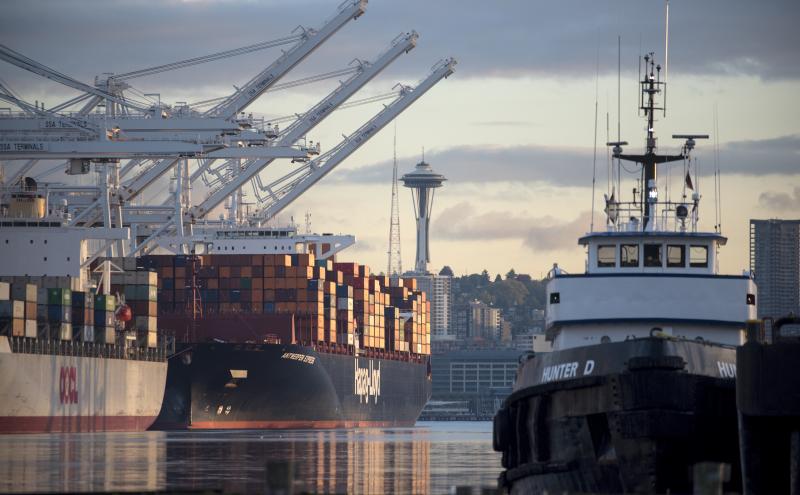
Container volumes through Puget Sound’s largest container ports remained flat in 2014, according to numbers released jointly for the first time by the ports of Seattle and Tacoma.
“Reporting our combined cargo volumes demonstrates our commitment to the Seaport Alliance,” said Port of Seattle Commission co-President Stephanie Bowman. “This new partnership will make our two ports stronger, faster and a more cost-effective gateway.”
The two ports announced in October 2014 plans to form a Seaport Alliance to unify management of marine cargo terminals and related functions. Currently in the due diligence phase, this strategic response to the competitive threats will strengthen the Puget Sound gateway and create more economic opportunities.
Puget Sound container volumes fell less than 1 percent in 2014 to 3.4 million 20-foot-equivalent units (TEUs). Tacoma and Seattle’s combined volumes have hovered near 3.5 million TEUs since 2010. Last year marked the second consecutive year of decline, underscoring the competitive pressures reshaping the global shipping industry.
Larger vessels and shipping line alliances mean fewer vessels are calling at fewer ports. Together, Seattle and Tacoma comprise the third-largest container gateway in North America, but their share of the West Coast market has been falling over the past decade.
“The industry is changing and the competition from other North American ports is fierce,” said Port of Tacoma Commission President Don Johnson. “We must adapt and work together to maintain—and grow—our share of the West Coast market to benefit the economic health of Washington state.”
Containerized export volumes through the two ports dipped 1.6 percent last year to 1.2 million TEUs, while imports fell 4.1 percent to 1.4 million TEUs. Meanwhile, domestic container volumes grew 6.1 percent to 870,733 TEUs on the strength of the Alaska trade.
The combined marine cargo operations at both ports support more than 48,000 jobs across the region and provide a critical gateway for the export of Washington state products to Asia.
In other 2014 cargo news:
- Grain exports rebounded, jumping 96.5 percent to 7.5 million metric tons following a bumper crop that helped return grain to normal volumes following 2013’s historic lows.
- Petroleum volumes grew 26.6 percent to 997,977 metric tons.
- Breakbulk volumes improved 1.3 percent to 253,377 metric tons on the strength of construction and heavy machinery imports.
- Auto imports posted a 9.6 percent gain to 175,802 units as an improving economy and decreasing fuel prices drove new car sales.
- Log exports fell 28.9 percent to 276,628 metric tons due to decreasing demand in China.
About the ports of Seattle and Tacoma
Combined, the ports of Tacoma and Seattle are the third-largest container gateway in North America. Regional marine cargo facilities also are a major center for bulk, breakbulk, project/heavy-lift cargoes, automobiles and trucks. Learn more about the Port of Tacoma.

